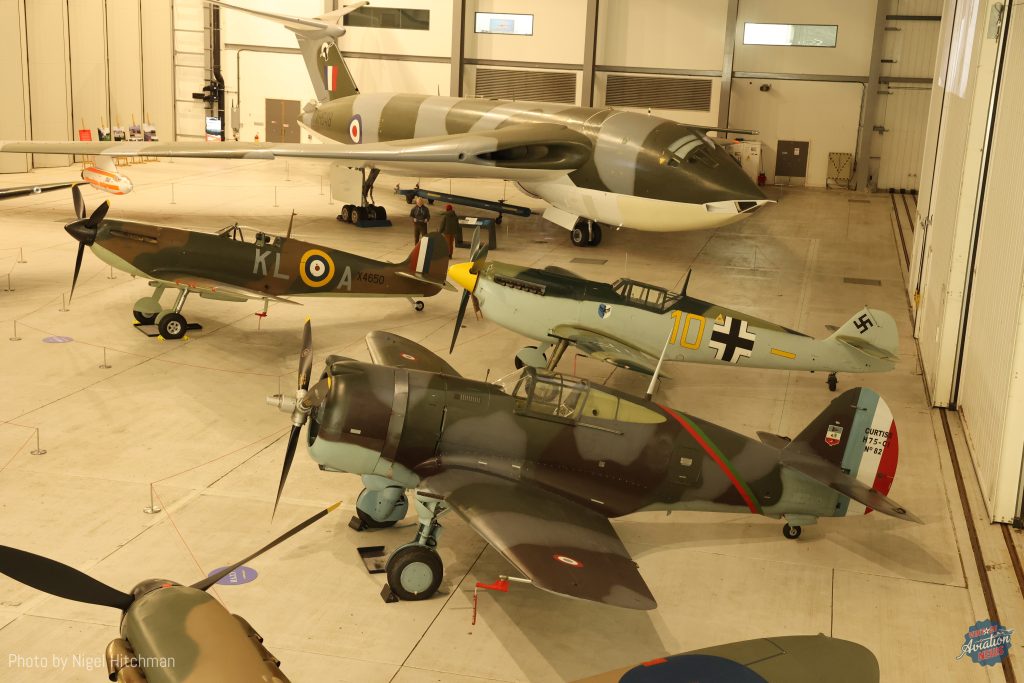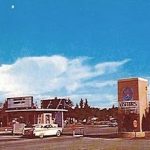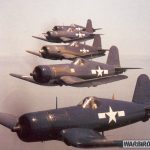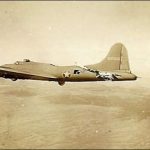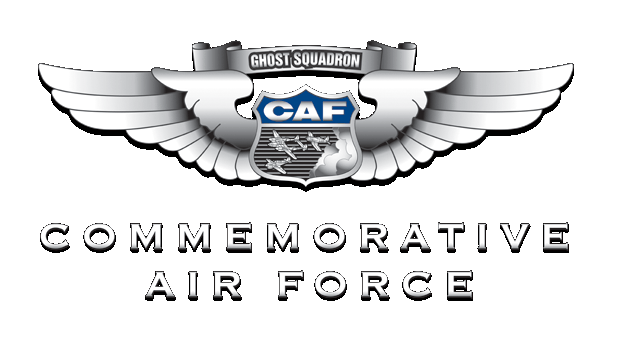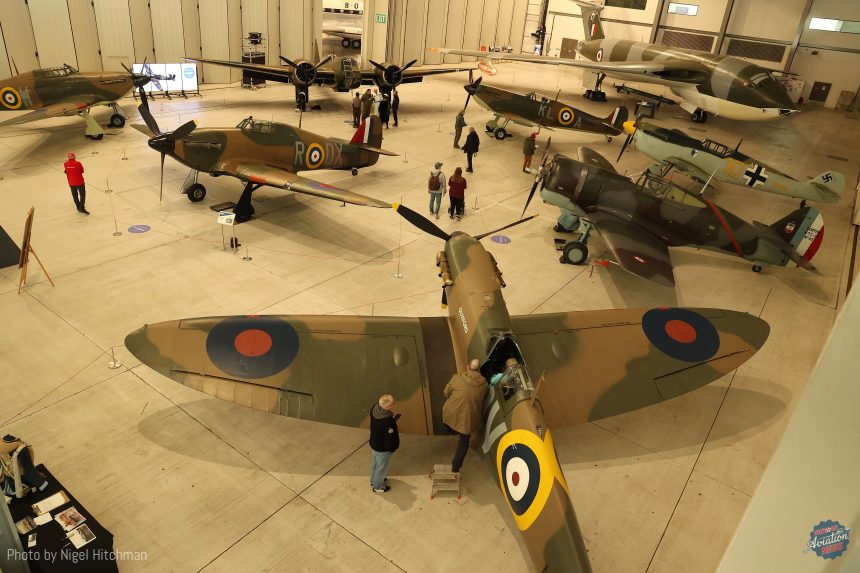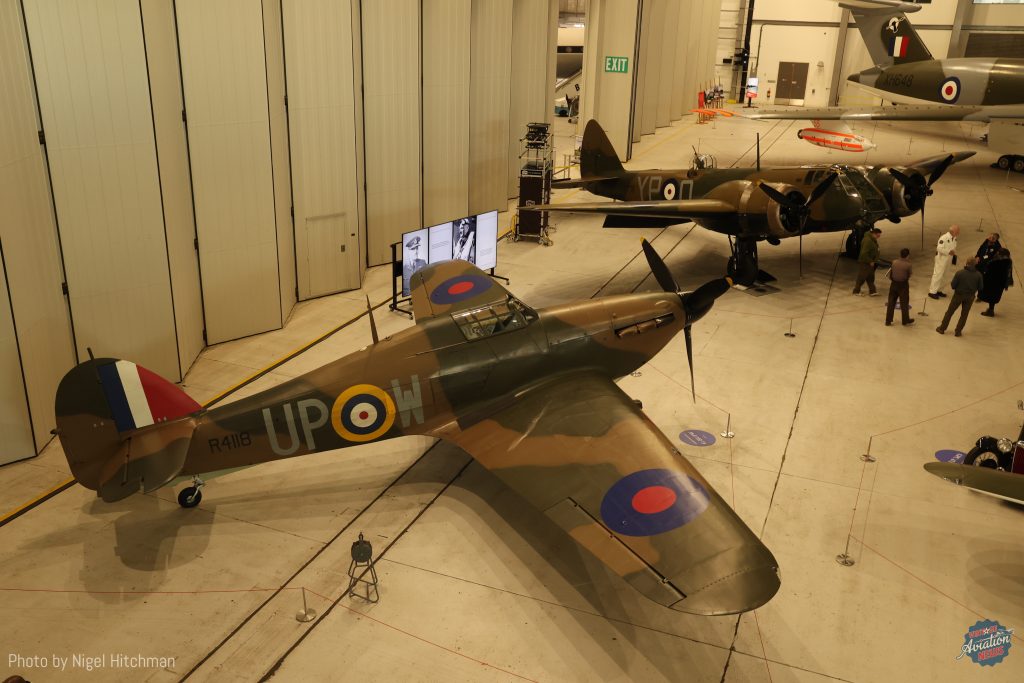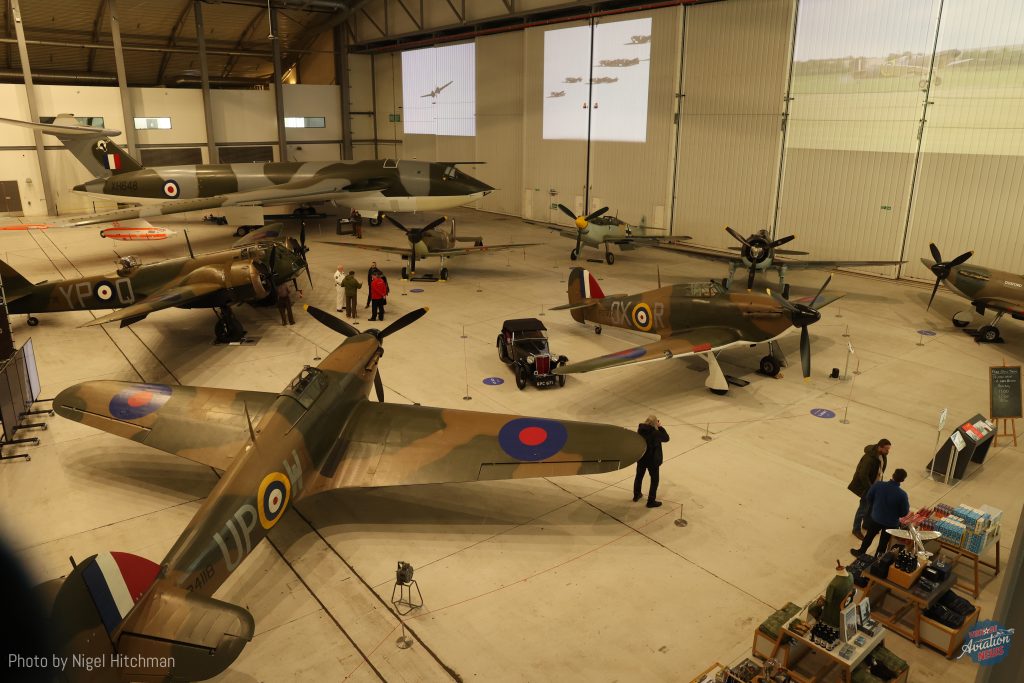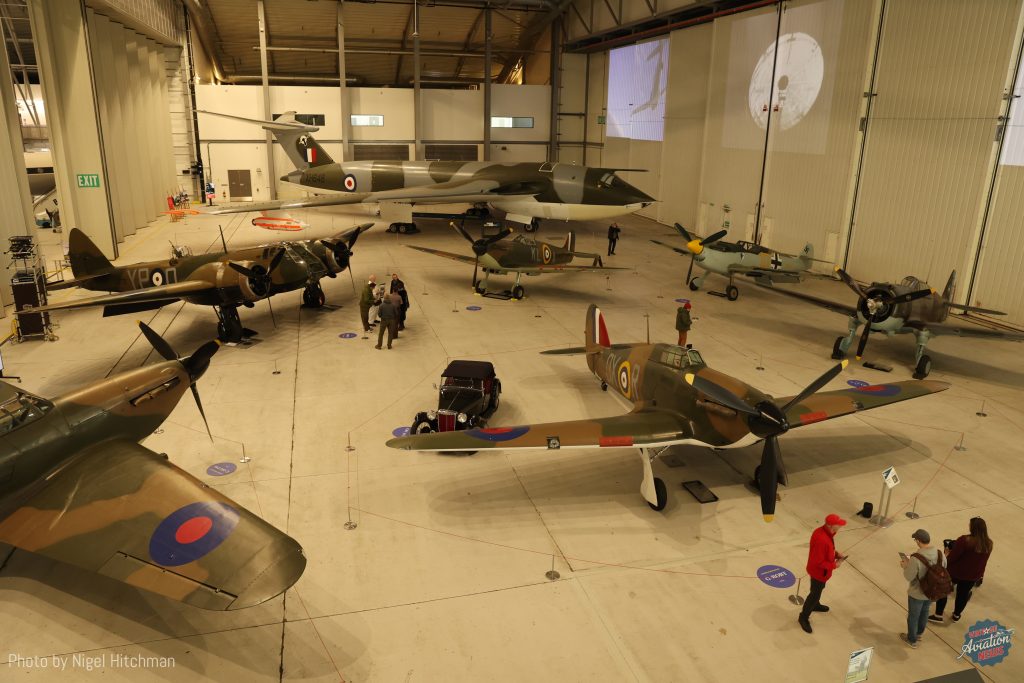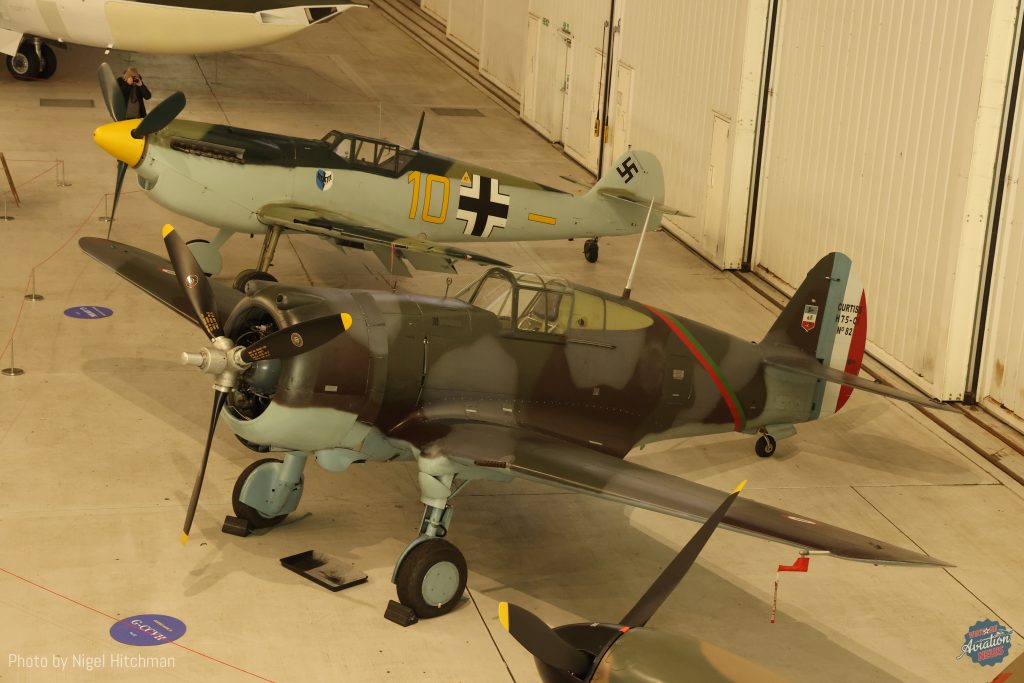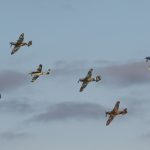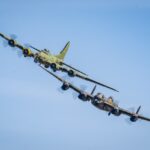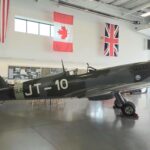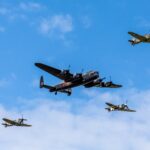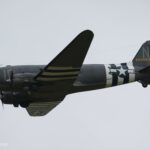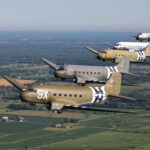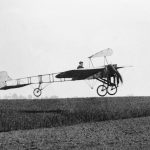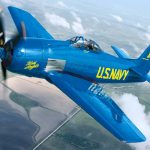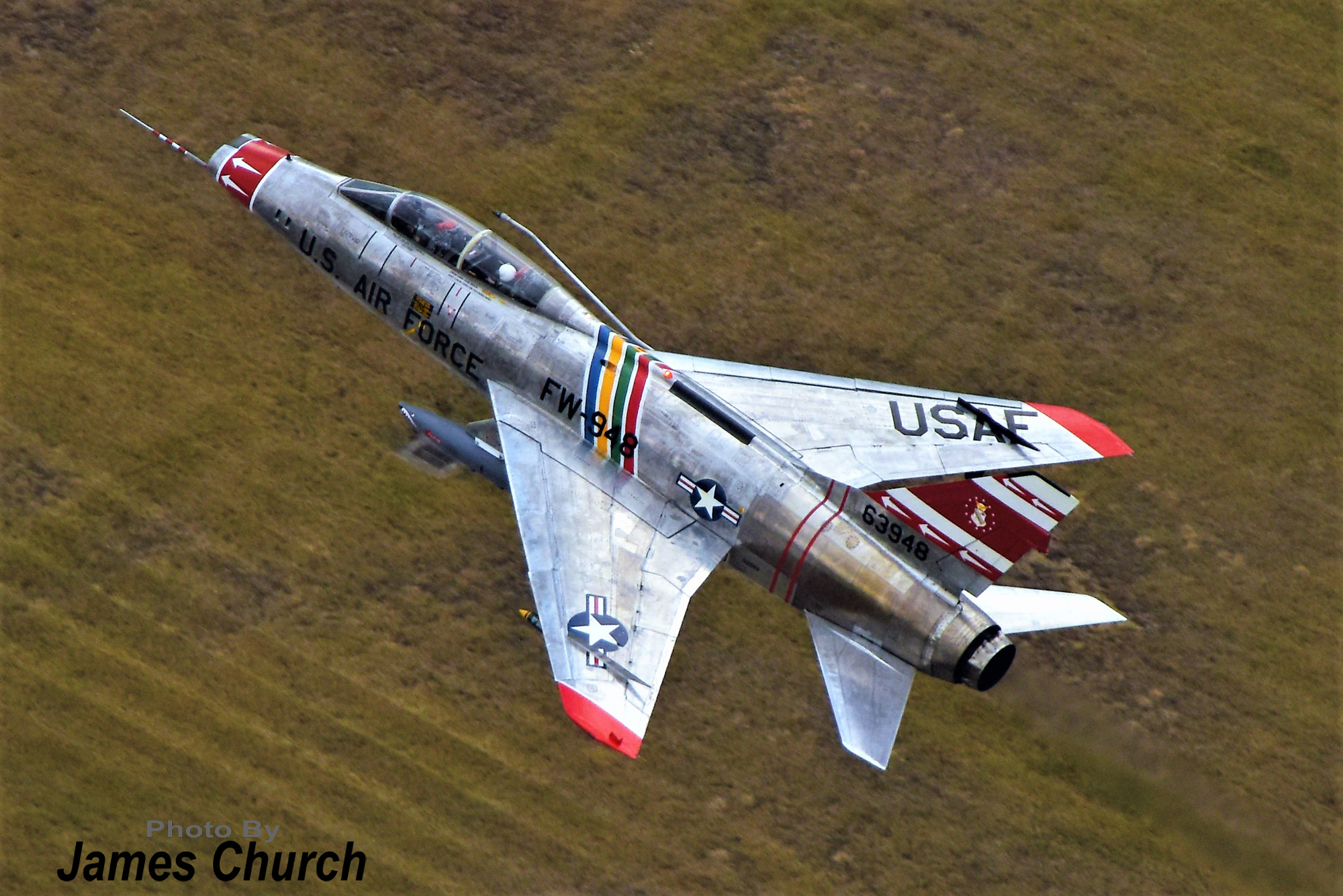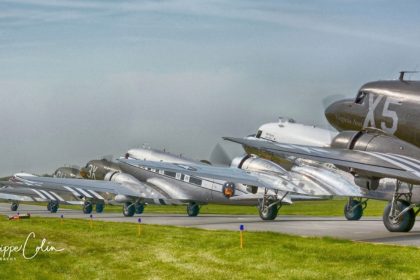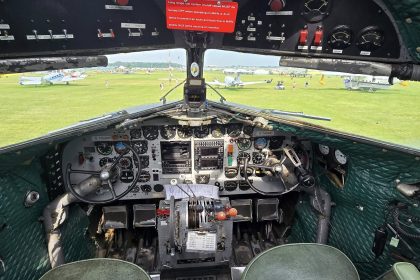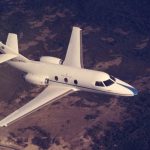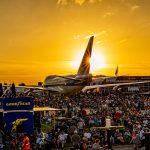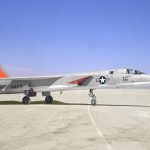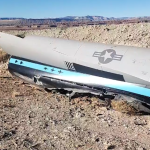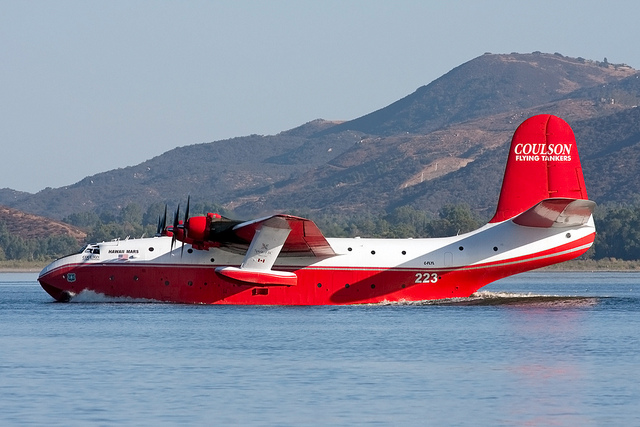Following on from several successful previous years’ exhibitions in the Conservation Hall at the front of the Airspace hangar, IWM Duxford has this year staged the “Scramble!” expedition to represent the early days of WWII when RAF pilots would be sitting around at their dispersal huts waiting for the call of “Scramble.” When they heard the word, often accompanied by the ringing of a bell, they were to run to their aircraft along with their groundcrew, get in, start up and then fly off to fight the attacking Luftwaffe. There would often be multiple sorties per day during the summer of 1940, particularly during the Battle of Britain, which is generally recognized to have been 10 July to 31 October 1940.
The exhibition features seven aircraft that represent those flown during the summer of 1940 in Great Britain and France, with two Spitfire Mk.1a, two Hurricane 1s, a Bristol Bolingbroke restored to represent a Blenheim night fighter, and a French AF Curtiss Hawk 75, together with their adversary Messerschmitt Bf109, represented by a Hispano Buchon. There are also films projected onto the hangar doors including scenes from The Battle of Britain which was filmed at Duxford, and other memorabilia displayed. Guided tours and sitting in the Spitfire Mk.1a are available for extra cost. Unfortunately the lighting is mostly turned off to allow the films to be watched, but they do have certain days when the lighting is turned up between 3pm and 4pm for better photographs, although that didn’t help me as I needed to leave by 3pm to fly home before dark! The aircraft featured are:
Supermarine Spitfire Mk Ia N3200 G-CFGJ
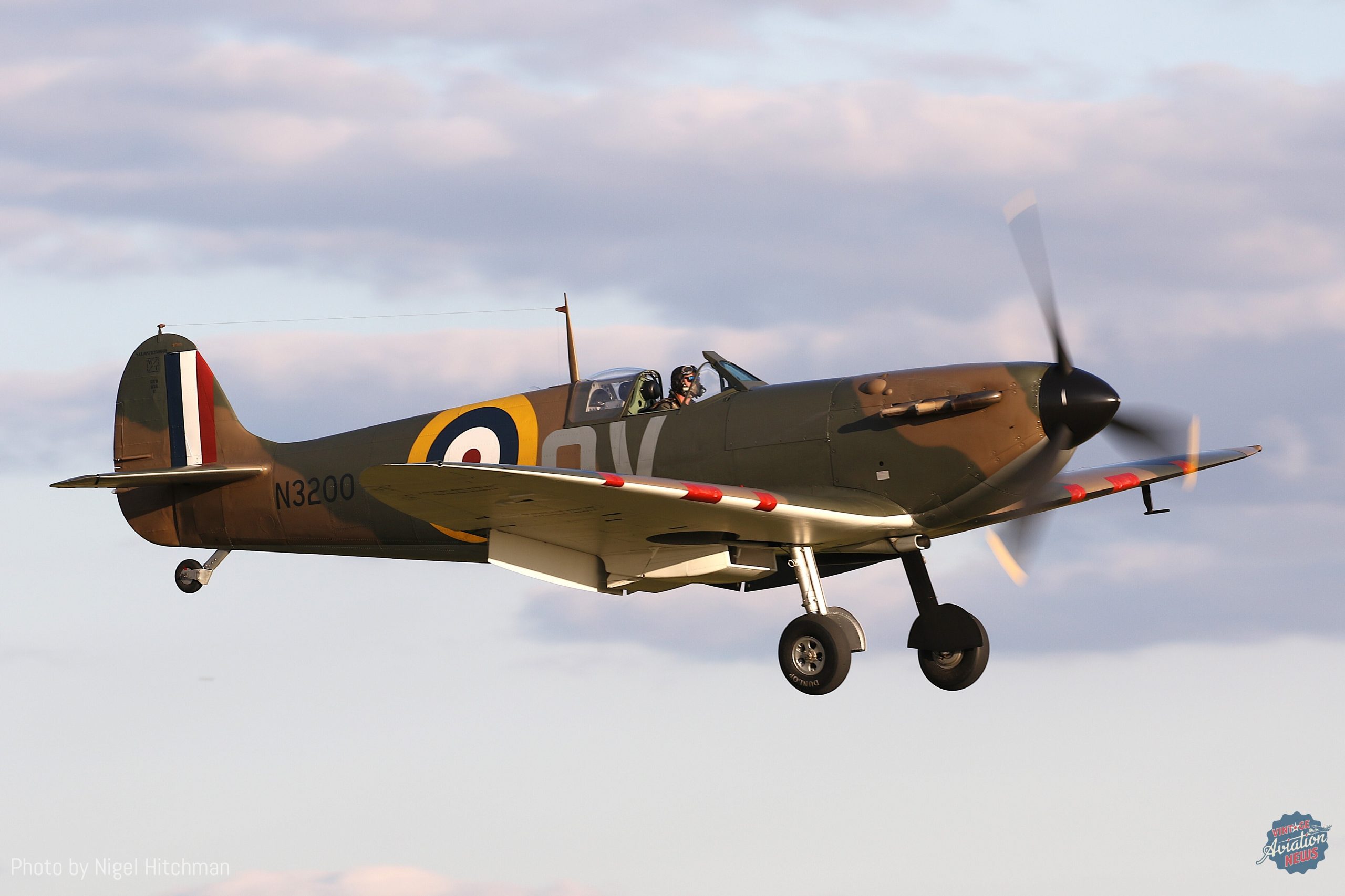
Built in Southampton flying from Eastleigh in late 1939, the Supermarine Spitfire Mk Ia N3200 G-CFGJ was delivered to 19 Squadron at Duxford in April 1940. It took part in operation Dynamo, protecting the evacuation from France at Dunkirk. Flown by Squadron Leader Geoffrey Stephenson, N3200’s only operational sortie took place on 26 May 1940. After shooting down a Junkers JU 87 ‘Stuka’, Stephenson was himself shot down, crash-landing his Spitfire on the beach at Sangatte. Stephenson was captured and taken prisoner while N3200 remained on the beach, sinking into the sand. In 1986 strong tides revealed its position and it was dug out and recovered. It was largely intact, but very few part were usable for restoration. The recovered remains were acquired in 2000 by Dr Thomas Kaplan and Simon Marsh who contracted Historic Flying Ltd to restore it. N3200 flew again in 2014 and then in 2015 was donated to IWM by Dr Kaplan and his family. Its remains airworthy, looked after by ARC and regularly flies at Duxford airshows.
Supermarine Spitfire Mk Ia X4650 G-CGUK
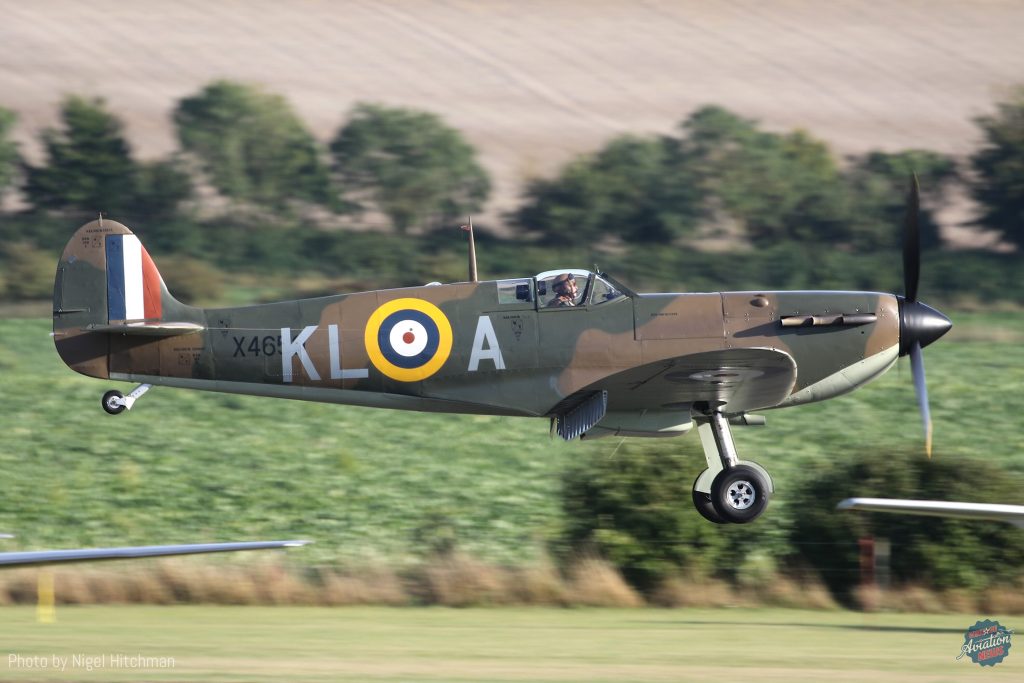
Built at Woolston, Southampton flying from Eastleigh on 23 Oct 1940, and delivered to the RAF two days later, the Spitfire Mk Ia X4650 G-CGUK entered service with 54 Squadron at RAF Catterick, Yorkshire on 14 Nov. On 28 Dec when flown by Sergeant Howard Squire, was lost in an air-to-air collision with New Zealand Battle of Britain Ace Alan Deere, during a practice attack X4650 got to close and hit Deere’s Spitfire, chopping off the tail. Squire and Deere both bailed out. X4650 crashed into the bank of the River Leven near Red Hall Farm, Kirklevington. It was rediscovered in 1976. In 1995 the wreckage was acquired by Peter Monk and restoration started soon after with his Spitfire Company. The project was later acquired by Dan Friedkin joining his large warbird collection under the Comanche Warbirds banner. It had its first flight at Biggin Hill in March 2012 and some time later moved to Duxford. In 2016 it was painted as R9612 for its appearance in the film Dunkirk.
Hawker Hurricane Mk I P2902 G-ROBT
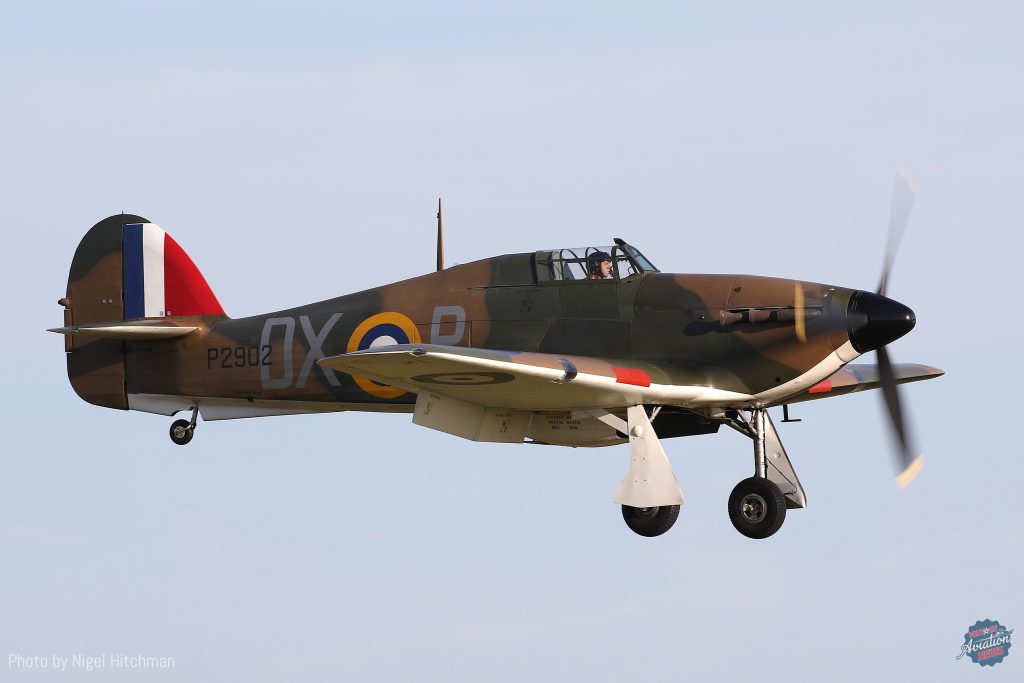
Built under contract by Gloster Aircraft at Brockworth, flying in Oct 1939, the Hawker Hurricane Mk I P2902 G-ROBT was delivered to 245 Squadron at Drem, Scotland initially on shipping protection. Moved down closer to the channel to protect the evacuation of Dunkirk during operation Dynamo, on May 31 when being flown by Pilot Officer Kenneth McGlashan, it was shot down in a dogfight with two Messerschmitt Bf 109s. McGlashan was wounded but managed to crash land his Hurricane on the beaches of Dunkirk. He returned to Britain with the evacuating troops, and fought in the Battle of Britain, surviving the war. P2902 was found by French enthusiasts in 1988 and recovered. It was later acquired by Rick Roberts who had it restored by Hawker Restoration at Milden, with the first flight on 19 June 2017. It was bought by Graham Peacock/Anglia Aircraft restorations and is operated by Ultimate Warbirds at Duxford.
Bristol Blenheim Mk IF L6739 G-BPIV
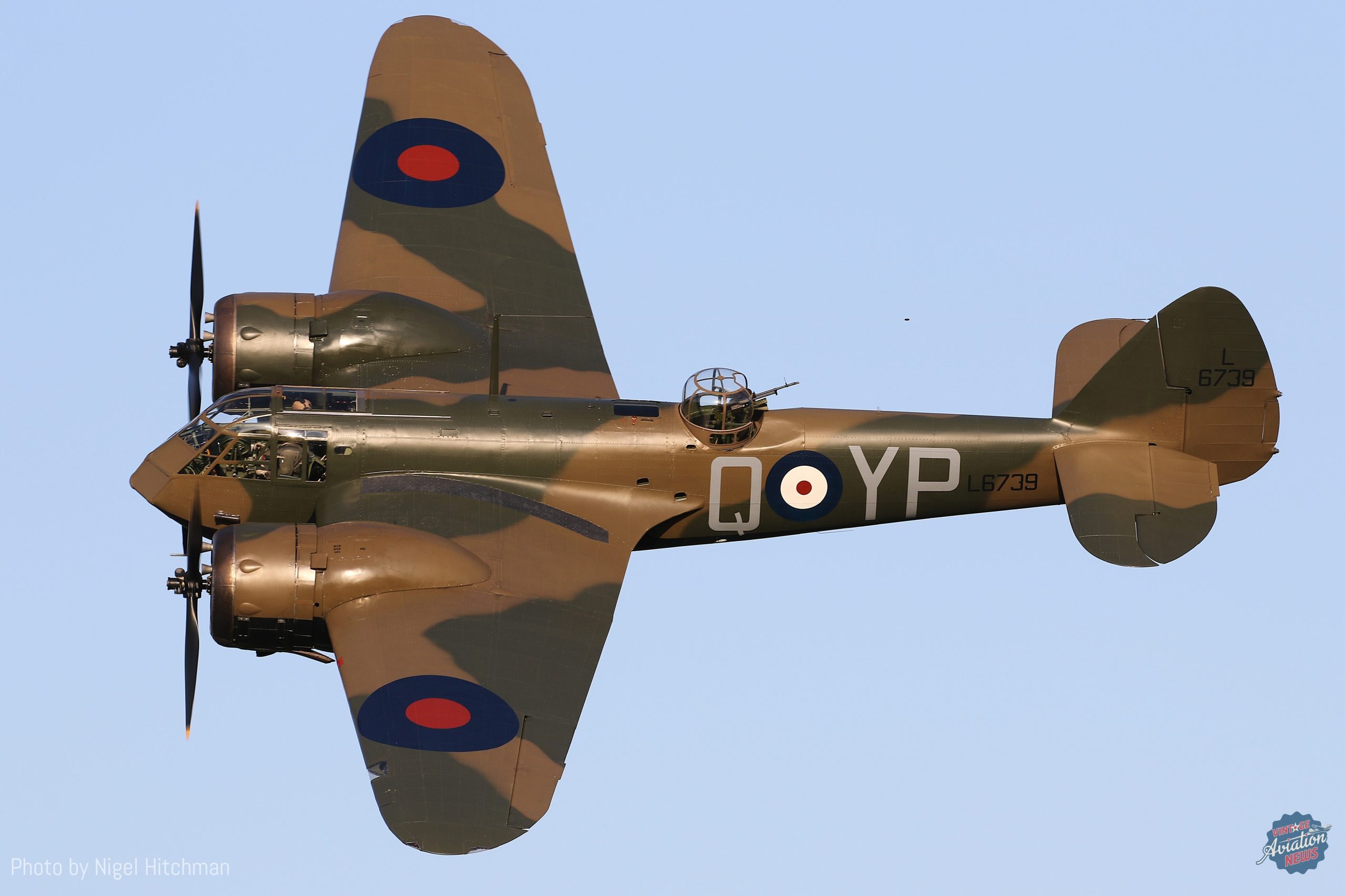
While the majority of this aircraft is a 1943 Bristol Bolingbroke built in Canada, the nose section is from L6739 which entered service as WWII began in September 1939 and was used as a night fighter by 23 squadron up to the end of the Battle of Britain. The aircraft was scrapped, but the nose was kept and ended up with a Bristol Aeroplane Company employee Ralph Nelson who converted it into a car in 1946. This was eventually acquired by the Blenheim society in 1992. The remains of Bolingbroke IV RCAF 10201 were acquired in the late 1980s from the Strathallen collection in Scotland, it having been built by Fairchild Canada in 1943 and served in the RCAF for three years. It was restored by the Aircraft Restoration Company at Duxford flying again in 1993 (their second Blenheim restoration). Damaged in an accident in 2003, the aircraft was restored again and this time the nose of L6739 was incorporated, flying again in Nov 2014. It was also part of the Dunkirk film in 2016.
Hawker Hurricane Mk I R4118 G-HUPW
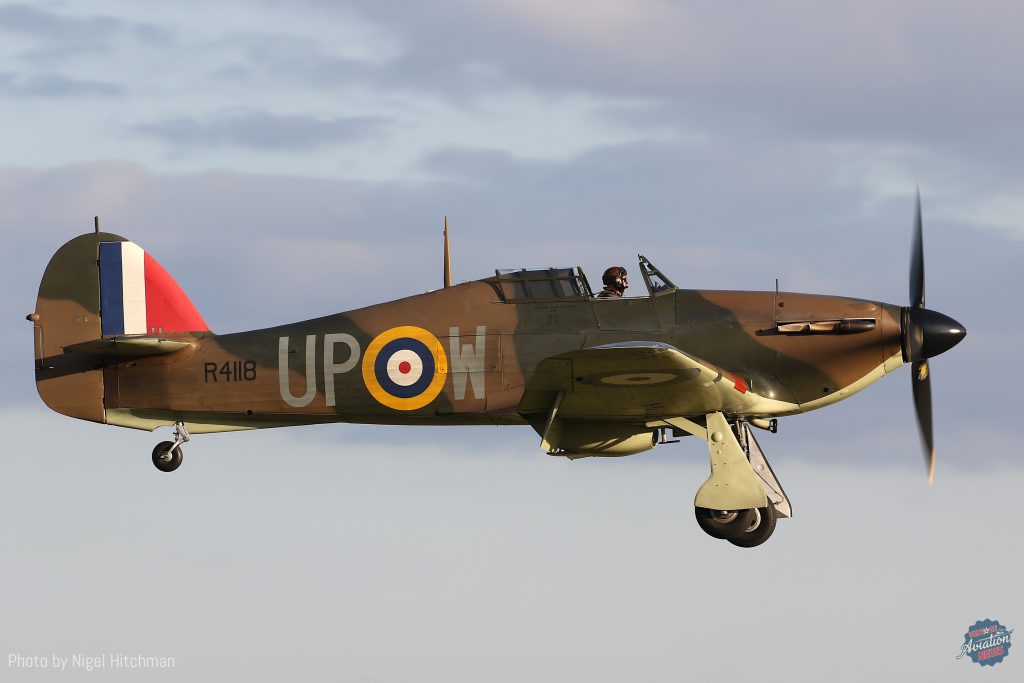
Built under contract by Gloster Aircraft at Brockworth and delivered to 605 Squadron at Drem, Scotland in August 1940, this Hurricane Mk I R4118 G-HUPW moved to Croydon R4118 and flew 49 sorties during the Battle of Britain, shooting down five enemy aircraft. After being damaged on 22 October 1940 it was sent for repair and re-entered service with 111 squadron at Aberdeen, Dyce in January 1941. Later relegated to training roles before being shipped to India in December 1943, it remained in its shipping crate for the duration of the war and then was given to Varanasi university for engineering instruction. It was recovered by Peter Vacher and brought to England in 2001 after 5 years of negotiations. Restored by Hawker Restorations, it flew again in 2004. It was sold to James Brown/Hurricane Heritage and is based at White Waltham and Duxford.
Curtiss Hawk-75 No.82 G-CCVH
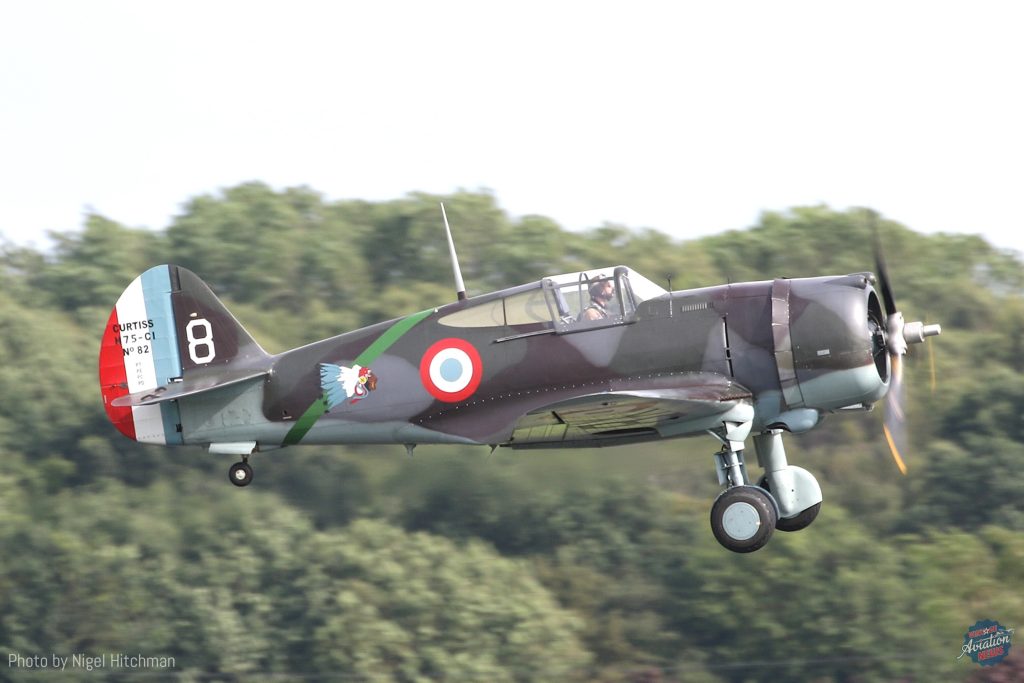
Built by Curtiss in Buffalo, NY in 1939 and delivered to the French Air Force in April 1939, this Curtiss Hawk-75 No.82 G-CCVH was issued to 1ere Escadrille, Groupe de Combat 11/5 Lafayette at Reims, where she carried the command stripes on the fuselage of the personal aircraft of Commandant Murtin, CO of both GC 1/5 and GC 11/5. She moved to Toul during the Battle of France, and then on to Oran in Algeria before being taken over by Vichy control. The Hawk maybe have even been in battles with the RAF and USAAC in North Africa. After the war it served in a training role at Cazaux western France and ended up in storage from 1950 until acquired by The Fighter Collection in 1995. It was restored by Fighter rebuilders at Chino, flying again in 2004 and first appearing at Duxford in 2005. It wears an authentic Armée de l’Air standard three-tone scheme, with her GC 11/5 markings on her port, and the Lafayette Escadrille Sioux Indian head motif (the TFC logo) on her starboard side. Currently the only airworthy Hawk 75, together with the P-36 at Duxford, there is also a static Hawk 75M in Thailand and P-36 in the NMUSAF at Dayton. The only other known survivor is a former Norwegian AF Hawk 75 which was also then operated by the Luftwaffe and finally Finnish AF where it had an illustrious history and is currently being restored at Avspecs in New Zealand for the Military Aircraft Museum at Virginia Beach.
Hispano Aviación HA-1112 M1L Buchón ‘Yellow 10’ G-AWHK
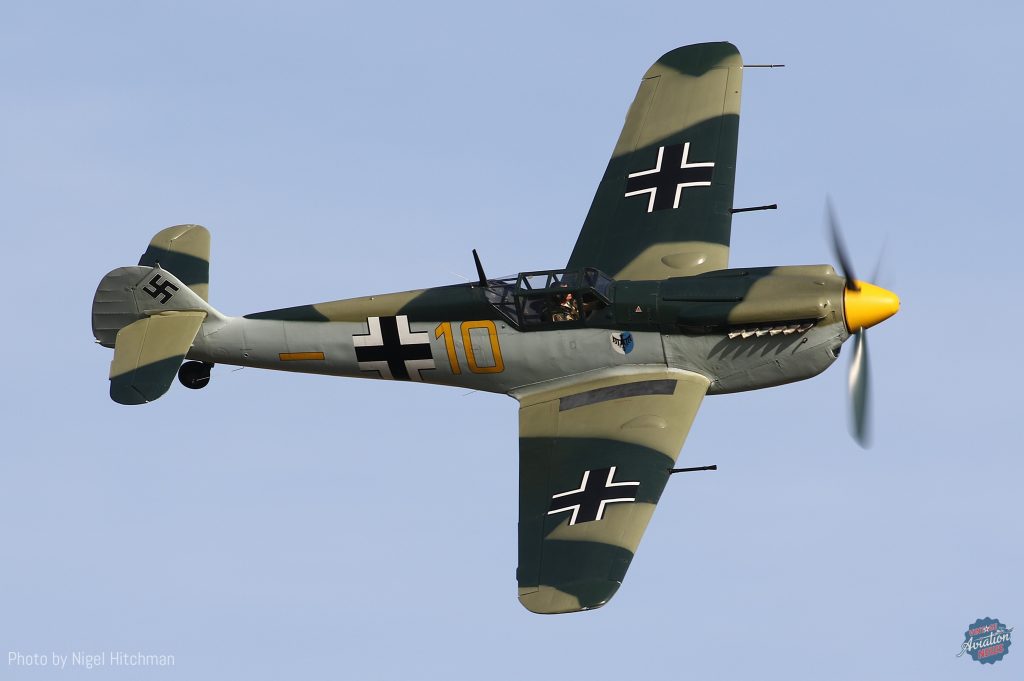
Built in Seville, Spain in 1959, this Hispano Aviación HA-1112 M1L Buchón entered Spanish AF service but was sold at auction in 1968, one of 22 Buchons bought by Spitfire Productions for The Battle of Britain film, registered G-AWHK. It was one of the 11 taken by Connie Edwards in Lieu of payment for film work and went to his ranch in Texas, where it was only flown briefly and then put on static display. It was bought by the Old Flying Machine Company in 1996 and returned to Duxford for a short time before being sold to Robert Fleming/The Real Aeroplane Company at Breighton where it was completely restored and returned to flight in May 2006 as G-BWUE. Later that year it was sold back to Spitfire Ltd at Duxford and has remained based at Duxford ever since reverting to G-AWHK and more recently painted back in its Battle of Britain film colors, although it has worn a number of other temporary schemes representing Messerschmitt Bf109s for filming. Here it represents the enemy Bf019E that the others are scrambling against.
